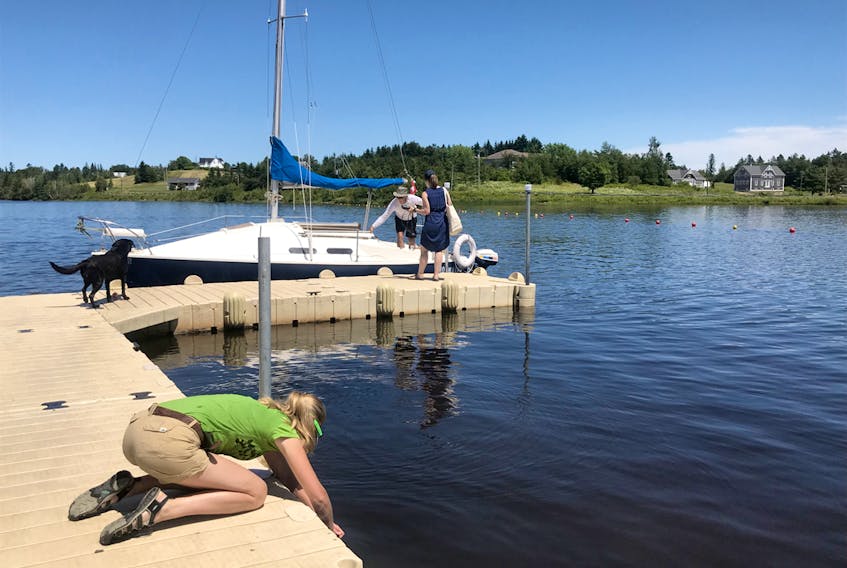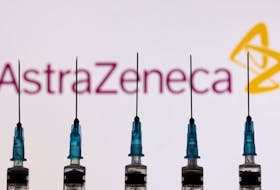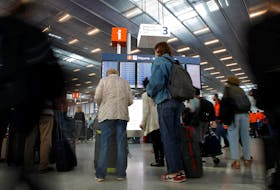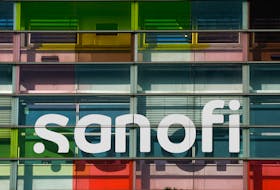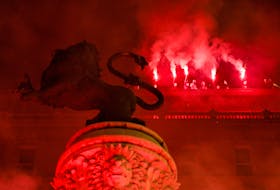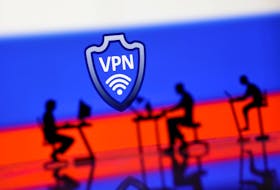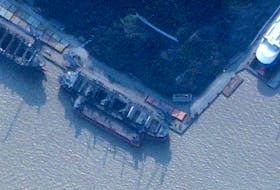SACKVILLE, N.B. – Sackville-based EOS Eco-Energy is turning to citizen science to gain a better understanding of the region’s watersheds and, if required, undertake any necessary restoration or protection initiatives in the future.
And EOS watershed coordinator Kelli-Nicole Croucher said their first endeavor was truly a success.
On Thursday, July 19, EOS set up a table during the Town of Sackville’s Silver Lake Fun Day, supplying volunteers with water sampling equipment, which was used to collect samples from various points around the lake.
She noted that the Town of Sackville does collect samples from the public beach area of Silver Lake, but EOS was looking for a more complete analysis.

“We also had someone generous enough to take us out on their sailboat,” she added, “so we were able to actually go take samples from all around the lake and in the middle of the lake at the deepest point. That was really valuable. It gave us that wider picture we were looking for.”
In addition to volunteers taking water samples, Croucher added, several property owners around the lake had contacted them prior to the event offering access to their properties so the samples could be taken.
Croucher noted many of those who offered access to their land were interested in the initiative as they had attended a meeting in April about the potential for starting a Silver Lake Association.
“We had somebody from the New Brunswick Alliance of Lake Associations come and give a talk and we had a number of residents from around the lake attend that meeting.”
As well, Town of Sackville staff were on hand during the July 19 event to answer any questions the public might have about their own water sampling procedures at the lake.
EOS-Eco-Energy partnered with Doug Campbell’s lab at Mount Allison University to have the Silver Lake water samples analyzed using a new piece of equipment the lab was able to purchase thanks to a New Brunswick Environmental Trust Fund grant.
“All of our samples from Silver Lake came out well and below the E. Coli limit for recreational use,” Croucher noted.
The planning stages
Croucher has worked with EOS as their watershed coordinator since July 2017, and she said a considerable amount of work has been completed since then.
“I was hired on last year to start planning a long-term water quality monitoring program within the Chignecto watershed, so along the New Brunswick and Nova Scotia Border. Last year we started up the Chignecto Watersheds Committee, an advisory committee of experts in the area, and picked out sample sites and kind of planned out how we were going to do our monitoring program, and all the equipment and sites and everything, and then this year is our first year of monitoring.
“So we’ve been going out to collect samples monthly and in addition to our sampling that we do we're trying to get some citizen sampling going.”
The value of citizen science
With a staff of only three, Croucher said citizen volunteers play an especially important role in the work EOS is doing, adding there are other benefits, as well.
“Citizen science is very popular as of late and it really helps in terms of collecting data. A lot of biologists use it but it’s also (useful) for water quality because you can get a larger spatial picture of the area.
“Getting volunteers to go out and collect samples helps with that but it also increases stewardship. People understand water quality more and feel more connected to our watershed and then in turn adopt better practices to keep it protected and in the state that it’s in.”
The next step
EOS is planning a second water-sampling day on Saturday, Aug. 18, in the Cape Tormentine Peninsula area, Croucher said.
“We have four areas that we’re going to be setting up in throughout the say,” she explained, “and it’ll be the same kind of idea where we’ll be there with bottles and a map and have people going out to collect samples for us and then coming back and marking on the map where they got the samples. That will give us a better understanding of the watershed up in the Cape Tormentine area and those will be fresh water and salt water samples.”
While EOS is mainly concentrating on the Tantramar River watershed this summer, the data collected from the Cape Tormentine area will help them plan work for next year, Croucher said.
“From this data, we might be able to identify areas of concern or areas of interest from residents . . . like where they might use it recreationally.”
For more on EOS Eco-Energy, visit https://eosecoenergy.com/en/.

